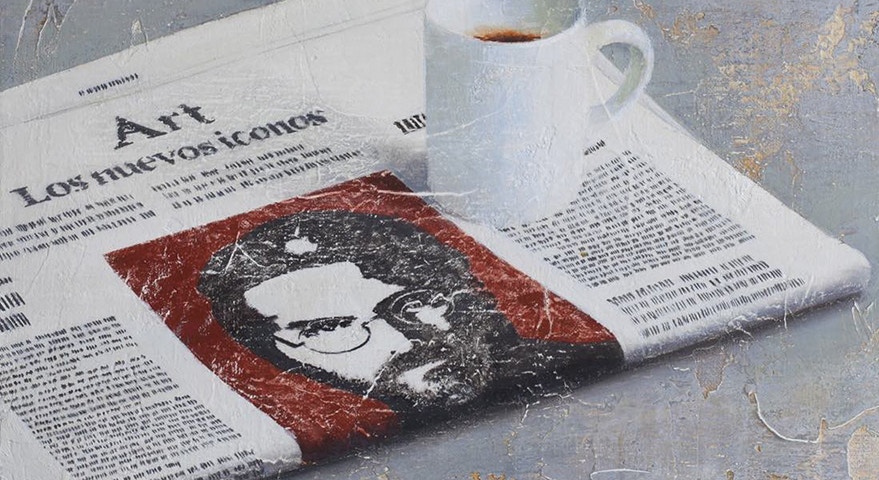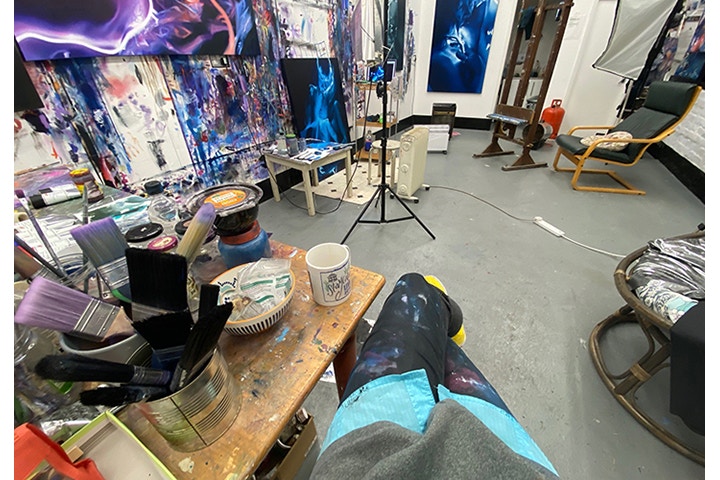Cass Art Top Tips to publicise your art work
Posted by Cass Art Staff on 1st Sep 2021
Maybe the best place to start here is what is PR? “Public Relations” is a broad umbrella under which community relations, networking, publicity and a multitude of other activities fall. In the business sense, it has been defined as an integral process about influencing, engaging and building a relationship with key people across a myriad of platforms in order to shape and frame the public perception of a person or organisation. All of these add up to what generates your public image as an artist/designer/creative.
As you build your art career it is important to understand the benefits of public relations for artists. This blog aims at providing the basics with some history and ideas on the subject. Every artist or creative professional should be using some form of public relations to build their personal brand or profile. PR is can be seen as the ‘dark art’ of the art marketing mix! - not quite traditional marketing but not quite social media. But at its core, good PR is about gaining maximum value from your brand without spending heaps of money, and there are a few really simple things you can do to boost your profile and presence for free!
Be a ‘spokesperson’
As an independent artist, you are at the very centre of your brand. Start to treat yourself as such! If you don’t already have some, get some professional quality publicity photographs of yourself taken and start to think about what your ‘position’ is on news events in your industry and beyond. Jot down a quick list of ‘key messages’ for yourself - what are the most important things you’re communicating through your work, what do your customers absolutely need to know about you that makes you unique. Try to keep these short and snappy if possible. One of the advantages of doing this is that even if you don’t manage to secure any ‘traditional’ press coverage, spending some time refining your key messages will pay dividends for your social media presence and other communications tools - you’re creating a ‘frame’ from which everything else should hang.

Local media research is key
If you live in the UK or Ireland, you are likely to have at least a large regional newspaper, a smaller local newspaper and a BBC local radio station in your area. Not to mention a growing number of online sources of news and arts and culture blogs. Spend some time researching these - it should be easy enough to find the email addresses of features or arts editors at the print titles and for local radio you’re looking for the name of a producer rather than a presenter. Always look for personal emails rather than generic ones, and if they’re not online, pick up the phone and ask - most regional media outlets still have central switchboards who are happy to give out email addresses. Be brave!
Everything is a story
Once you’ve researched your local media, spend some time writing a short and concise ‘pitch’ email to each title - explaining what your story is and why it should be of interest to them. The fact that you are from the area, or have lived there for a long time, gives you an instant advantage as an interviewee, but bear in mind that you will have more success if you have ‘news’ of some sort - i.e - your work is being included in an exhibition or you have an exceptional or newsworthy story about a piece you’ve created. That said, under the right circumstances almost anything can be ‘news’ - never think that your story is too small, because chances are it isn’t. Local BBC radio stations are often also looking for good ‘talkers’ for regular interview slots they have - so even if your story isn’t of interest to them, you might be.
Persistance is key
PR rule number one: If journalists don't email back, don’t assume that a lack of reply means that they’re not interested in your story. More likely, they have an inbox they’re struggling to keep up to - and they either have missed it altogether or have passed it onto one of their colleagues and can tell you the best person is to speak to if it isn’t them. A quick follow up phone call, no matter how daunting the thought might be, is much more often a positive experience than a negative one. And even if it's a ‘no’ this time, don’t stop trying.
Essays are not necessary
It can be helpful to write a press release if you feel you have a news story, but don’t get bogged down by this. Journalists typically don’t have time to read much more than a paragraph anyway, so if you feel you can say what you need to say in the body of an email then don’t waste your time writing anything longer.
Embrace your connections
Does your partner / friend / person you sit next to at work happen to have mentioned that they know a journalist?! Ask for an introduction! Also think about any larger organisations you work with and how they might be interested in working with you to promote your work. Any organisation large enough to have a press office should be more than happy to help, although, again, try to think about what your story is, and why it is of benefit to both you and them, before you call.

Emma Leone Palmer
Never underestimate the importance of good photography
As newspaper budgets dwindle, journalists are becoming increasingly reliant on PRs to be able to provide professional quality, high resolution photography of their products and spokespeople. In many cases, the quality of photography you’re able to supply is the difference between a feature running and not running. Ensuring you have great quality product photography - ideally both clear images of your product on its own against a white background (known as cut outs) and lifestyle shots - as well as great photography of yourself, is one easy way to put yourself head and shoulders above the competition. See our blog on photographing your work here also!
Shop online for everything you'll need. Don't forget to hashtag #cassart on social media to show us your creations.



